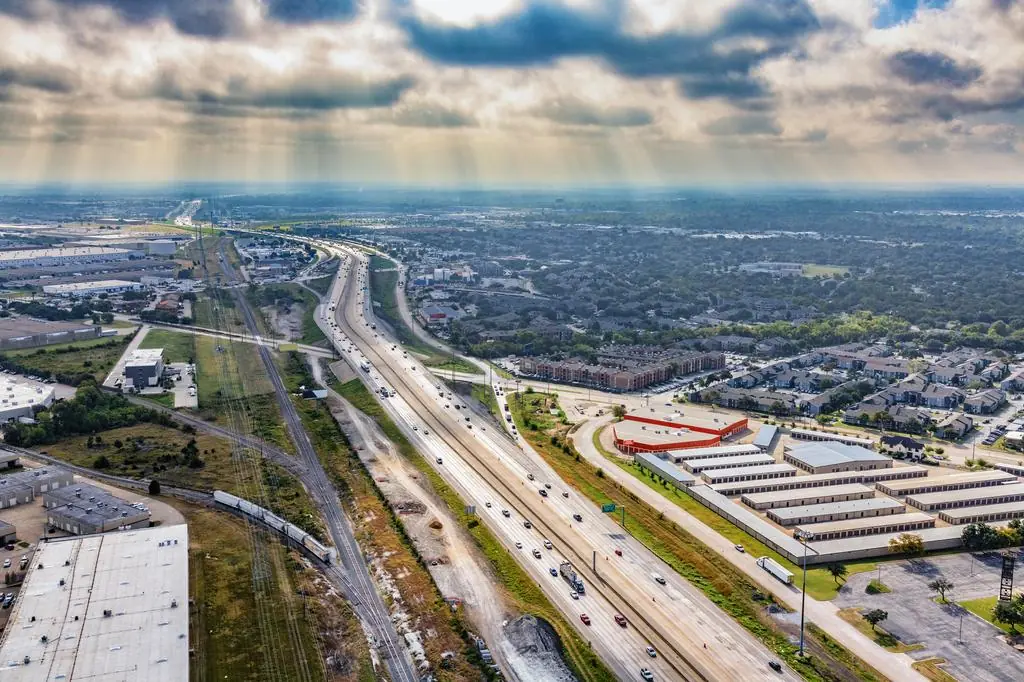The rapid growth of commuter towns is fueling commercial real estate development far from the core of the Dallas-Fort Worth metroplex. Communities that once seemed distant and sparse have become relatively close and increasingly populated.
“Commuter towns are seeing tremendous development,” said Eric Hawk, a partner at Archway Properties. “Two or three years ago, people didn’t have any interest in building speculative space but there’s millions of square feet of spec being developed now because the land is there.”
The dwindling availability of land within Dallas-Fort Worth proper is driving the region’s outward expansion. Dallas-Fort Worth area land prices rose 28% in a year, reaching an average of $6,294 per acre as of the third quarter of 2021, according to Research Economist Dr. Charles Gilliland with the Texas Real Estate Research Center (TRERC) at Texas A&M University.
“Waves of demand in the Dallas-Fort Worth metroplex meant strong activity in the region,” Gilliland said in releasing his research of third quarter annualized land sales. “Buyers eagerly purchased any properties for sale. Many of those buyers were investors, with a number of them subdividing large acquisitions and selling smaller tracts.”
Developers have found that land outside of the urban core is more affordable. They can also complete projects without the additional costs and complexities that are more common with infill sites, which tend to be smaller or require additional prep work or engineering.
“These commuter communities have made significant investments in infrastructure. They’ve encouraged people to come out by installing roads and utilities that make the cost of development easier for developers,” Hawk said.
Commuter towns tend to have good labor pools in terms of quantity and quality as well, Hawk said. “Everybody’s competing for labor, so communities that have a good labor base are attracting businesses primarily for that reason,” Hawk said.
Suburban growth
Traditional commuter towns and suburbs, like Mansfield and Rockwall, have continued to grow. They’ve also been joined by newcomers, such as Anna and Lancaster.
Anna has become one of the fastest-growing cities in Texas. Its population doubled from 2010 to 2020, reaching 17,000. And it keeps growing.
“There’s a lot of land. That’s why we’re seeing a lot of developers coming our way,” said Joey Grisham, Anna’s economic development director.
With 61 square miles of land to work with, Anna offers more than twice as much as many other cities, Grisham said. It is also strategically located along major transportation corridors and close to development hotbeds like Richardson, where Texas Instruments is building a semiconductor manufacturing plant. “Suddenly, Anna is a nexus to a lot of projects,” Grisham said.
Texas Instruments has also announced plans to build a semiconductor plant in Sherman as well. “The TI announcement in Sherman drove more calls to our office for commercial and industrial properties,” Grisham said.
Anna has been proactive in managing growth and planning, Grisham said. For example, it has developed a master plan, invested in water and waste-water projects and has offered credits to development groups that invest in infrastructure.
Also, the city’s economic development team has connected landowners with developers. “The challenge we have now is a lack of available buildings. There’s not enough product on the ground,” to accommodate businesses that want to be in Anna immediately, Grisham said.
“We’ve been courting both speculative groups and build-to-suit projects,” Grisham said. “Economic development groups are wise to recruit both because you want to keep options open with all developers and all end users. Some are looking to own and do build-to-suit while others want a building and speed to market.”
Commercial development
As a developer, Hawk prefers economic development councils to encourage speculative development. “A lot of times, you can’t wait on deals, so you need speculative space to have space to meet the tenant’s timeline for occupying the space. So, it’s a good strategy to incentivize speculative development so they can have some inventory to be competitive to attract businesses to their communities,” Hawk said.
Bob Moore Construction is building both speculative spaces for developers and build-to-suit facilities for businesses. “Supporting the developers to bring speculative inventory to offer something to a tenant that might be coming to a market is just as important as courting a big corporation for a build-to-suit,” said Kyle Whitesell, executive vice president at Bob Moore Construction.
Bob Moore Construction has followed commercial development’s march into increasingly distant commuter towns. “We’re getting a lot of activity building facilities in extended areas,” Whitesell said, noting projects in communities such as Sunnyvale and Waxahachie as examples.
The contractor has built retail, industrial, office and manufacturing space. “With developers and clients willing to get away from the core market, it’s certainly opened up the opportunity for more projects,” Whitesell said.
Whitesell expects commercial development to continue to spread outward. “Cost-effective housing is available farther out, which is bringing labor to the extended commercial development market,” Whitesell said.
“For example, large distribution centers need 100 to 200 or more employees at an affordable rate. If they’re built too far out, it’s hard to get that type of labor to commute. But with the affordable housing extending farther out, it’s easier for industrial development to follow,” Whitesell said.
More labor and more land mean more commercial development for Dallas-Fort Worth’s commuter towns.
Contact Bob Moore Construction to discuss partnering on the construction needs for your next project.
